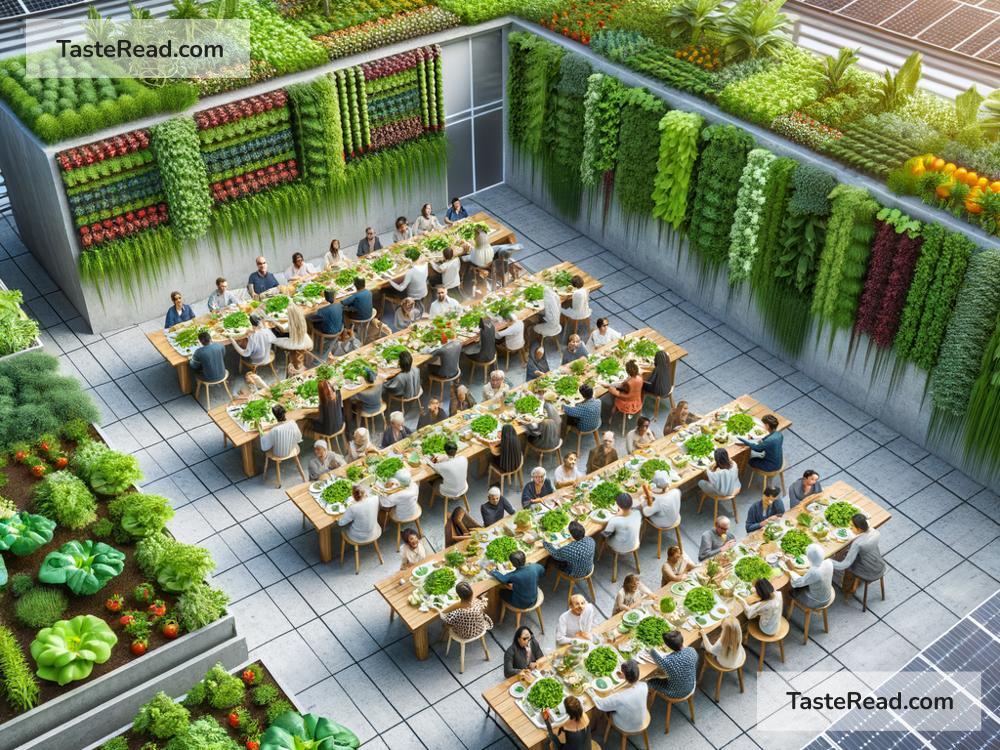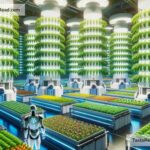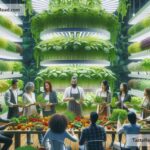The Future of Food and Sustainable Cities: Creating a Healthier Planet
People all over the world are starting to think seriously about how we grow, eat, and share food. As cities get bigger and climate change impacts our planet, we need smarter ways to feed ourselves while protecting the environment. But what does the future of food look like, and how will sustainable cities play a role in this transformation? Let’s explore these ideas in simple terms.
Why Food Matters
Food connects everyone. It’s not just about filling our stomachs; it’s about keeping people healthy, bringing communities together, and taking care of the planet. Right now, a lot of food is grown using methods that harm the Earth. Cutting down forests, using too many chemicals, and wasting water are just a few examples. Millions of tons of food are thrown away each year, even while many people go hungry.
To solve these problems, we need to change how we produce and share food. Sustainable cities can lead the charge by using new technology and creative ideas to make food systems greener and fairer.
Cities Are Growing Fast
By 2050, the United Nations estimates that nearly 70% of people will live in cities. That’s a lot of mouths to feed! Big cities often rely on food grown far away, which must be transported long distances. This creates emissions that harm the environment and makes cities dependent on systems that might break during crises like natural disasters.
But cities can flip the script. With the right strategies, cities can grow more of their own food, reduce waste, and build communities that prioritize sustainability. Here’s how:
Urban Farming: Growing Food in the City
Imagine skyscrapers or abandoned buildings being transformed into farms. Urban farming is one of the most exciting ideas for the future of food. People are already growing fruits and vegetables indoors using vertical gardens, hydroponics (growing food in water instead of soil), and rooftop farms. These methods use less space, water, and chemicals compared to traditional farming.
For example, Singapore, a country with very little farmland, has embraced urban farming. They use high-tech vertical farms to grow fresh food right in the city. This reduces the need to import food and lowers carbon emissions caused by transportation.
Community Gardens: Bringing People Together
Community gardens are another way cities can grow food sustainably. In a community garden, people work together to grow their own fruits and vegetables. These spaces help city residents save money, eat healthier, and connect with their neighbors.
Community gardens also teach people about how food is grown. Many city residents, especially children, have never seen fresh fruits or vegetables growing before. These gardens can help people feel more connected to nature, even in the middle of a busy city.
Technology and Smarter Food Systems
Technology plays a big role in shaping the future of food. Smart systems can help farmers grow more food with fewer resources. For example, sensors can measure soil moisture or weather conditions, letting farmers know exactly when to water crops. Artificial intelligence (AI) can predict which plants are most likely to succeed based on weather patterns or how fertile the soil is.
Cities might one day rely on robots or automated systems to grow and harvest crops in urban spaces more efficiently. That’s not all—there’s also lab-grown food. Scientists are working on ways to grow meat in laboratories instead of raising animals. This could cut down on the use of land, water, and emissions, while producing food in a sustainable way.
Reducing Food Waste
Food waste is a huge problem today. A lot of the food produced globally is never eaten—it’s thrown away in homes, restaurants, and farms. This waste is bad for the environment because it releases harmful greenhouse gases when it rots in landfills.
Cities can tackle this issue by making composting easier, using technology to track food waste, and encouraging businesses to donate unused food to those in need. Restaurants and homes can also participate in food-sharing apps that connect surplus food to people who need it. Reducing food waste will play a major role in feeding a growing population responsibly.
Sustainable Packaging
Plastic pollution is another problem cities face. Most food packaging today is made from plastic, which harms wildlife and takes hundreds of years to break down. In the future, sustainable cities will rely on eco-friendly packaging made from things like biodegradable materials, reusable containers, or edible wrappers.
Building Resilient Food Networks
Sustainable cities don’t just grow food; they also create strong networks to make sure everyone has enough to eat, even during tough times. Climate change, pandemics, and economic challenges can disrupt food supply chains. By growing food locally, cities can become less dependent on imports and make sure their residents always have access to fresh, healthy food.
Cities must also prioritize equity in their food systems. Everyone—no matter where they live or how much money they have—should be able to afford nutritious food. Local initiatives like farmers’ markets or food co-ops can make fresh food accessible to poorer communities.
A Vision for the Future
The future of food and sustainable cities is bright if we work together to use smarter ideas and technologies. Cities have the power to become hubs of creativity, where food is grown locally, waste is reduced, and everyone has access to healthy options. From rooftop gardens to lab-grown meat, the possibilities are endless.
By imagining cities where food systems are fair, green, and resilient, we can create a healthier planet—not just for ourselves, but for future generations. Together, we can turn our urban spaces into models of sustainability and innovative thinking. The future of food is about more than survival; it’s about thriving in harmony with the world around us.


